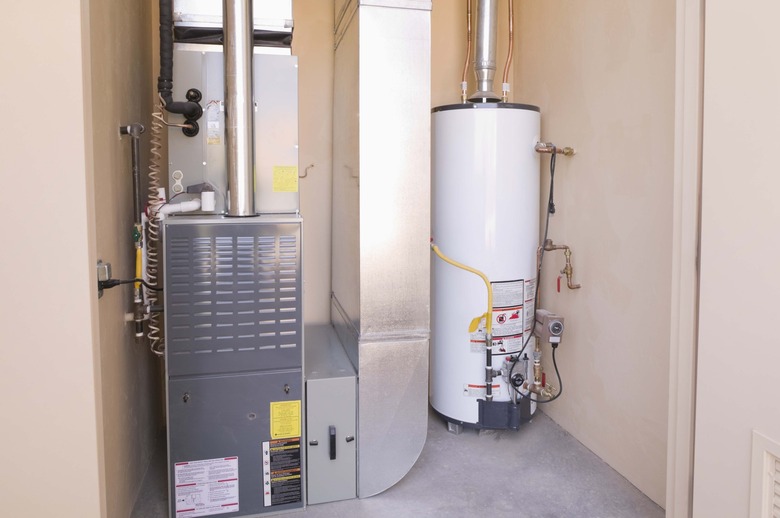What Is A Damper On A Furnace?
Small furnaces and larger, industrial sized systems both use dampers. In fact, most modern furnaces contain four dampers. Dampers ensure that furnace systems work well and safely by automatically regulating furnace functions or allowing a person to manually adjust those functions to safe settings.
Function
Function
Furnace dampers serve several purposes that relate to the air flow or pressure in the system. Some dampers may completely stop or allow the flow of air, while other dampers allow the furnace user to control the specific amount of air flow or pressure in the system.
Locations
Locations
Dampers are not only identifiable by their function and type but also by their location within the furnace system. For example, an ash pit damper is located at the base of the furnace (the ash pit) while a smoke pipe damper is located in the stove pipe that connects the furnace to the chimney. A damper at the base of the chimney is known as the check damper. The last common location damper is the fireplace door damper. These locations may correspond to the function of the damper as well. The check damper (back-draft damper) at the base of the chimney is responsible for preventing a reversal of air flow.
Types
Types
A pressure control damper controls the pressure or pressure differential in a furnace system while an user can adjust a flow control damper to adjust the (air) flow level in a system. Other dampers act in response to prevent the reversal of flow, as is the case with a check damper, or to establish a baseline for air flow or pressure within a purpose (balancing damper). The function of an isolation or shut-off damper is to stop the air flow, altogether, in a system, while a flow control damper simply allows a user to maintain a desired level of air flow.
Design
Design
There four main design types of furnace dampers are guillotine, butterfly, louver and specialty dampers. Several manufacturers produce guillotine dampers to be used in locations and situations where, as one manufacturer describes, "isolation with a minimized pressure loss is required. Simple shut-off with minimum leakage is accomplished by the basic design." Butterfly dampers are so named because they rely on a butterfly valve. Manufacturers frequently use butterfly valves for isolation dampers because of their simplicity. Louver and multiple-louver design dampers contain several, thin pieces known as blades. These blades can rotate to allow more or less air into the system.
Manufacturers may create specialty dampers to better fit furnace systems and to perform unique tasks. Specialty dampers may include stack caps, flap dampers, diverters and poppet valves. Some manufacturers may specialize in specific dampers above all others.
Warning
Warning
Dampers alone cannot keep a furnace system in top operating condition. It is essential for a person to perform periodic maintenance such as clearing the ash pit. While most dampers continue to work with small amounts of ash in the furnace, a large amount of ash may make it difficult for the damper to work correctly.
